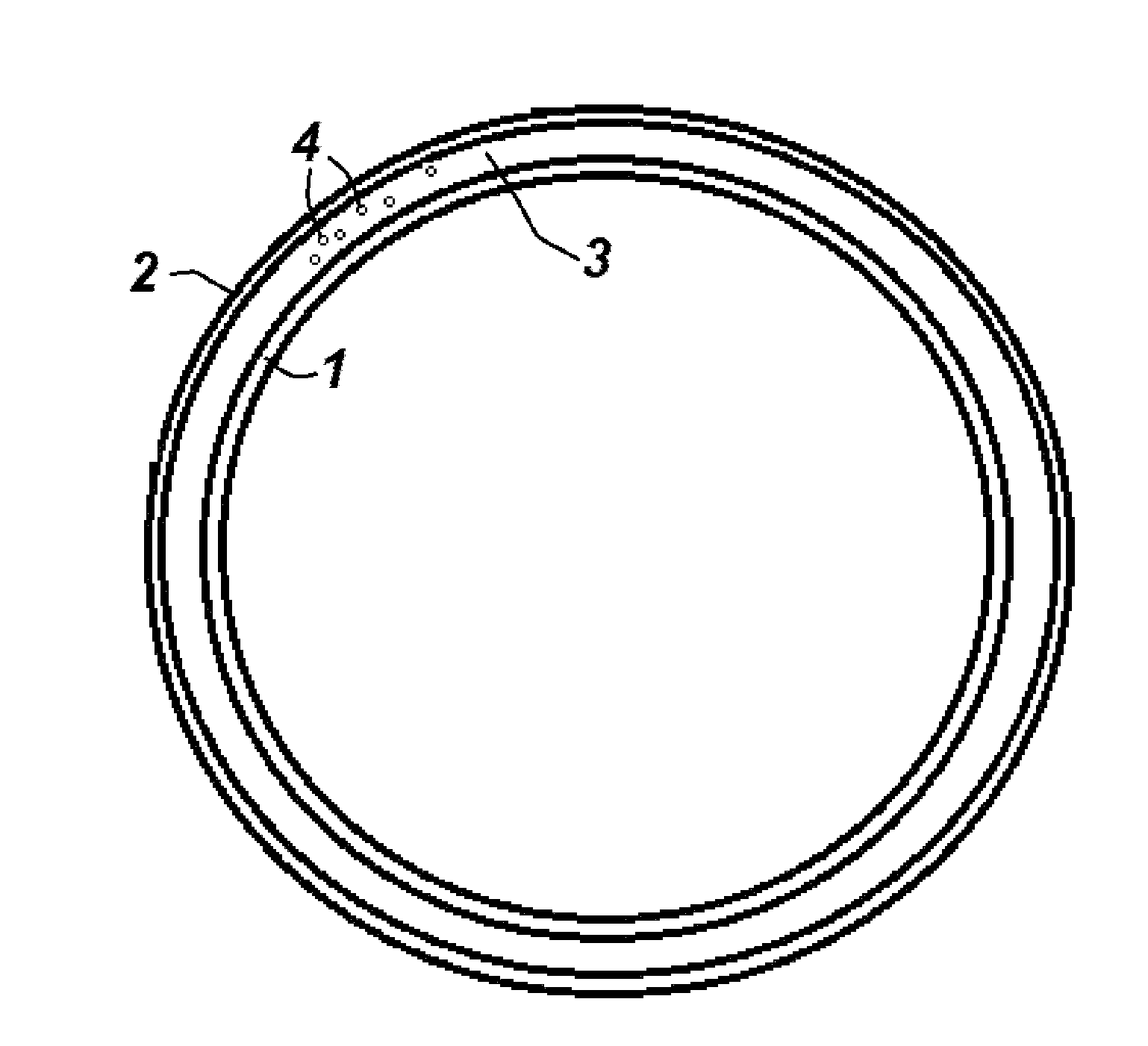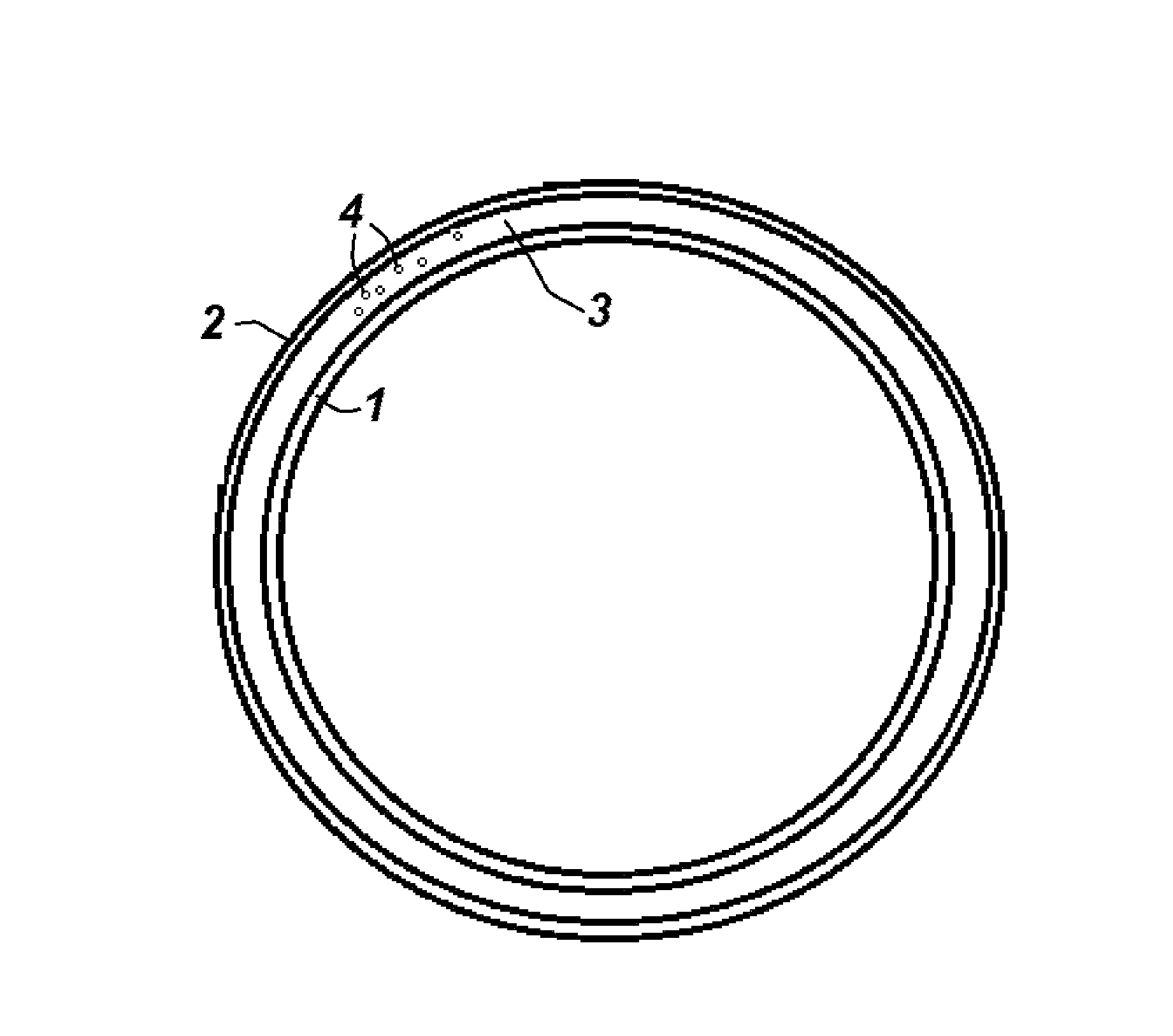Coextruded polyethylene film
a polyethylene film and coextruder technology, applied in the field of multi-layered plastic film, can solve the problems of film weakening, film weakening, film weakening, etc., and achieve the effect of less undulation and roughness
- Summary
- Abstract
- Description
- Claims
- Application Information
AI Technical Summary
Benefits of technology
Problems solved by technology
Method used
Image
Examples
Embodiment Construction
[0050]As seen in the drawing a coextruded tube comprises thin unfoamed outer and inner layers 1 and 2 that sandwich a foamed core layer 3 having cells as shown partially at 4.
[0051]The invention is explained below in more detail with reference to several embodiments.
[0052]In preliminary tests, three respective formulations were considered for the first unfoamed, weldable outer layer 1 as the sealing layer, the core layer 3 and the second unfoamed outer layer 2.
[0053]In order to provide a sealing layer with the usual sealing characteristics, the first outer layer 1 can be made of a material composition A1 having polyethylene with a density between 0.92 to 0.94 g / cm3, with mixtures of linear and nonlinear polyethylenes being particularly worthy of consideration. In order to provide a low-melting first outer layer 1 as the sealing layer, a polyethylene with a density of 0.905 to 0.917 g / cm3 (ULDPE) can be used as material A2. For a sealing layer with a very low melting temperature, on ...
PUM
| Property | Measurement | Unit |
|---|---|---|
| thickness | aaaaa | aaaaa |
| thickness | aaaaa | aaaaa |
| volume | aaaaa | aaaaa |
Abstract
Description
Claims
Application Information
 Login to View More
Login to View More - R&D
- Intellectual Property
- Life Sciences
- Materials
- Tech Scout
- Unparalleled Data Quality
- Higher Quality Content
- 60% Fewer Hallucinations
Browse by: Latest US Patents, China's latest patents, Technical Efficacy Thesaurus, Application Domain, Technology Topic, Popular Technical Reports.
© 2025 PatSnap. All rights reserved.Legal|Privacy policy|Modern Slavery Act Transparency Statement|Sitemap|About US| Contact US: help@patsnap.com


